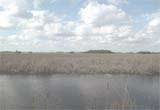
(Updated June 2010)
The benchmarks were established to Class B (stainless steel rod driven to refusal) NGS (National Geodetic Survey) stability standards. They were set in a location that is undisturbed and typical of the surrounding vegetation and topography. If the area appeared to be frequently dry, the benchmark was located nearby in or near a low swale or slough where water may be more often present.
All aspects of the NGS requirements were used including procedures, mark ties, closures, instrumentation, electronic note keeping, online recording, and utilizing NGS-approved processing software for field collection. The expected vertical accuracy of all benchmarks is 2 centimeters. Accuracy standards can be found at: http://www.ngs.noaa.gov/PUBS_LIB/NGS-58.html.
At some locations, two additional reference marks were set to provide redundancy at the site. For example, if the primary benchmark is disturbed, a survey from the reference marks can reestablish the elevation. The two stainless steel reference marks were set to similar NGS standards within 80 feet of the benchmark. A closed level loop was performed, originating at the benchmark, to the two reference marks.
To obtain additional information about benchmarks in this benchmark network, contact the point-of-contact for the originating agency for the benchmark.
